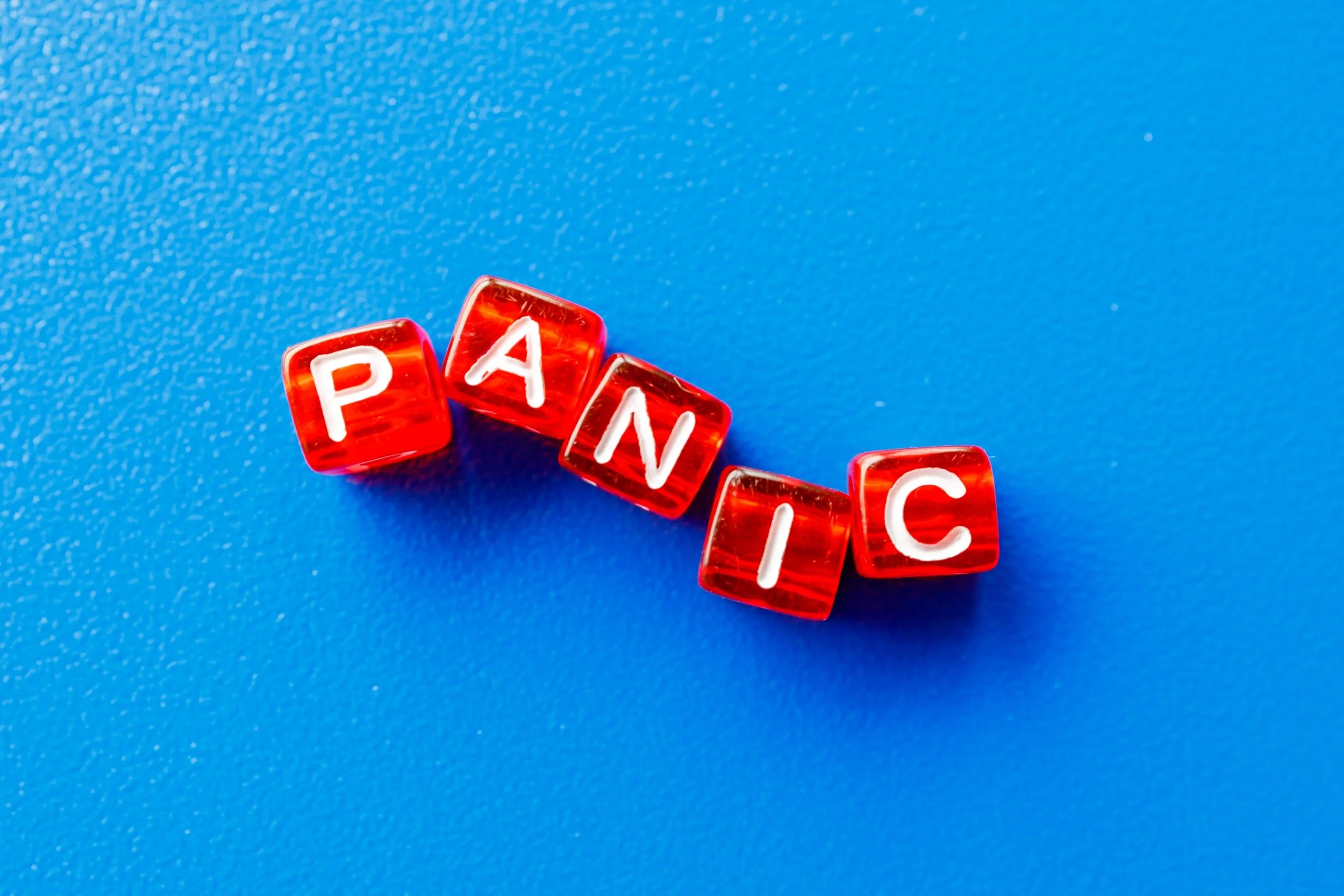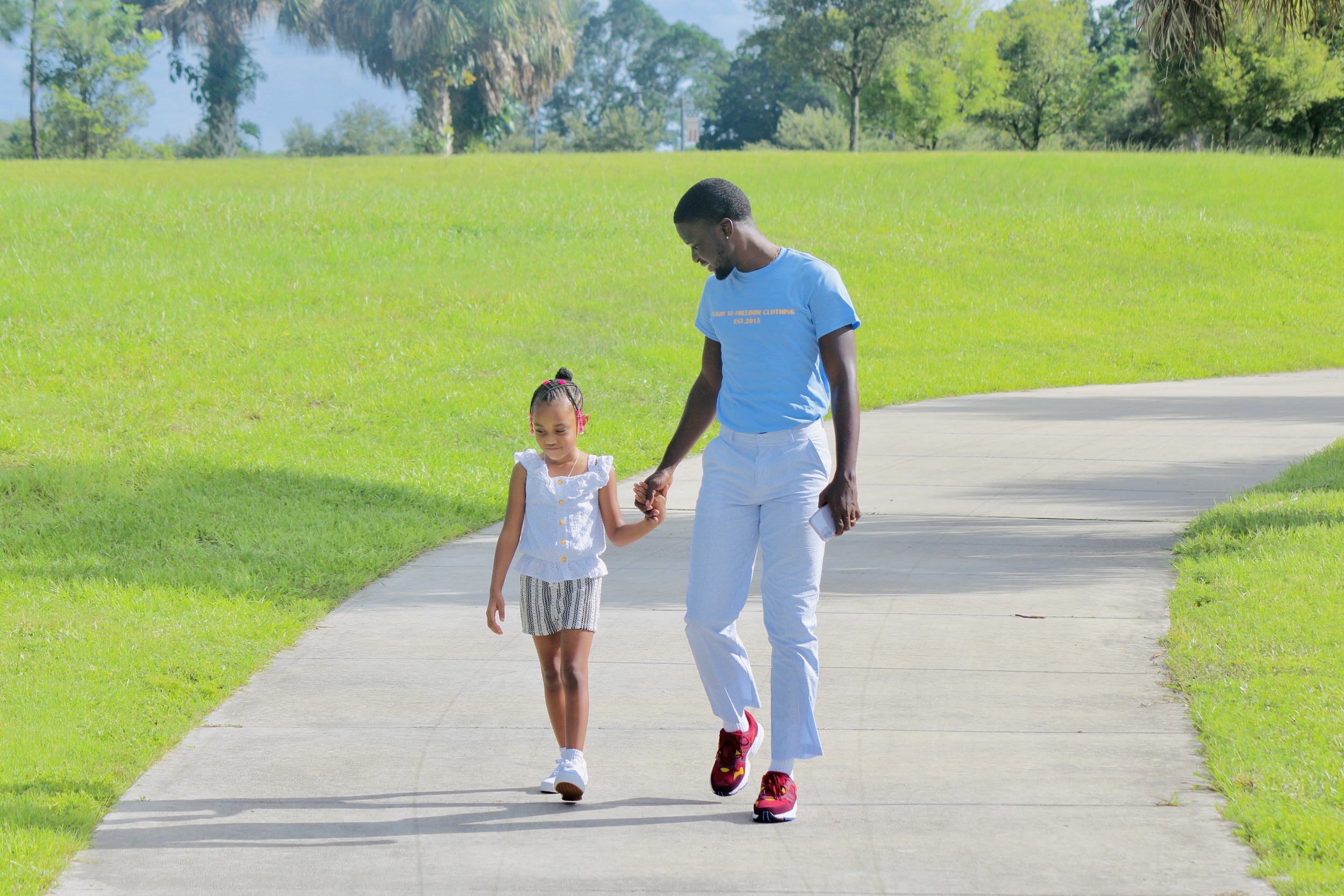Your child’s mind is racing. Her stomach is flip-flopping. She’s having a hard time falling asleep at night, and an even harder time getting up for school in the morning. You know something is going on, but you’re not sure what to call it when you describe it to people. Is your child having a panic attack or an anxiety attack? What’s the difference? Today I’m going to break down the difference between panic and anxiety, so you know the next steps to take to help your kiddo.
Panic Attacks and Anxiety Attacks Are Basically The Same Thing
I guess I’m giving away the big reveal in this blog post right up top, huh? Kids and parents often ask me if the symptoms they’re describing sound more like an anxiety attack or a panic attack. The truth is, most people use both terms to describe the same thing, so you can pretty much use them interchangeably. Mentioning either term to a therapist will give them a good idea of what you’re going through.
“Panic attack” is the official name for a sudden bout of intense fear, bodily reactions, and a feeling of impending doom. This is the term used by the DSM-5, the phone book-sized manual therapists use to diagnose mental health problems. The phrase “anxiety attack” isn’t usually used by therapists because it doesn’t appear in the book and isn’t “official.”
Parents might use the phrase “anxiety attack” to describe another intense emotional experience, like a tantrum or extreme worrying, but that’s rarely the case. It makes sense to describe panic as an attack of anxiety, and pretty much everyone will understand what you mean if you do.
What Does Anxiety Look Like in a Child?
The big difference between anxiety and panic is that anxiety is more general and long-lasting, while panic is specific and sudden. Anxiety can be mild or severe, and it can ebb and flow over time. Some kids may only feel nervous in specific situations, such as meeting new people or sleeping in bed alone, while others may have more generalized anxiety that happens most days.
If your child has anxiety, you might see signs like:
Frequent worries that seem like more than a phase
Avoiding specific people, places, or things to keep from feeling afraid
Difficulty falling asleep, or trouble sleeping alone
Muscle tension, headaches, and stomach aches that don’t have a clear medical cause
Clinginess and difficulty tolerating being alone
Repeatedly asking for reassurance
Irritability or seeming on edge
Being easily startled by loud sounds or surprises
Focusing on things that went wrong in the past or that might go wrong in the future
Every child is different, but these are some of the most common signs I hear about from families in therapy.
Signs Your Child Is Having Panic
Panic comes on suddenly, and it can be debilitating. It’s possible for a child to go about her day with anxiety, but a panic attack will stop her in her tracks. While anxiety gradually waxes and wanes, panic is like a light switch flipping on and off. The good news is that although panic attacks are intense, they don’t usually last very long. If your child has a panic attack, it will most likely be over in 15 minutes.
If your child is having a panic attack, you may notice things like:
Shaking hands or full-body shivering
Increased sweating
Hot flashes or chills
A racing, pounding heartbeat
Hyperventilating, or feeling like it is hard to breathe
Dizziness or weakness
Tingling feelings in the fingers or hands
A sense of losing control
Intense terror, as if something bad is about to happen
Your child may or may not be worried about something in particular when a panic attack occurs. Sometimes, panic attacks seem to appear out of the blue, when a child isn’t thinking about anything in particular. Over time, though, your child may start feeling worried about the panic attacks themselves. If she’s already had a few, she may dread the possibility of having another one.
Can a Child Have Both Anxiety and Panic?
Yep! A child can have both anxiety and panic attacks. In fact, it’s pretty common. Being anxiety-prone or sensitive to stress may put a child at risk for experiencing panic attacks. Sometimes, panic attacks happen on their own, and this is called Panic Disorder. It’s also very common for panic attacks to go hand-in-hand with other forms of anxiety, like Social Anxiety, Generalized Anxiety, and Agoraphobia.
If a child is struggling with both anxiety and panic attacks, she probably has lower-level anxiety on an ongoing basis that gets punctuated by brief moments of intense fear. For example, a child may struggle with perfectionism and worries about not doing a good enough job on school assignments. This could lead to problems like avoiding turning in homework, stomach aches on school days, and fitful sleep. Before a test, however, this child might experience a full-blown panic attack with rapid breathing and dizziness.
Anxiety and panic are both tough. Dealing with them both is even harder. The good news is, there are great therapy options to help kids with anxiety, panic, or a mix of both. It’s possible to get worries under control and learn to soothe panic responses in the body, so your child can get back to enjoying life.
Help For Kids With Anxiety and Panic Attacks in Davidson, NC
Anxiety doesn’t have to run your child’s life and call the shots in your house. If you feel like you’re bending over backwards to avoid things that set off your child’s worries, therapy can help. Kids can learn coping skills to feel more in control of anxiety and panic, like the ones I teach in Worry-Free Tweens, my online class for kids.
Child-friendly styles of therapy like Play Therapy and Cognitive Behavioral Therapy have been proven to help anxious kids feel better in a relatively short period of time. With a little practice, your child won’t have to dread their next panic attack, because she’ll know exactly what to do if she feels one coming on.
I love helping anxious kids and tweens in my Davidson, NC child therapy office. I also provide play therapy and CBT online to kids throughout North Carolina, New York, and Florida. I use these approaches because I’ve seen them work, and I know they’re effective. Whether you work with me or another counselor, I hope your family finds therapy helpful, too.
Questions? Ready to schedule an appointment? Reach out to me here.




